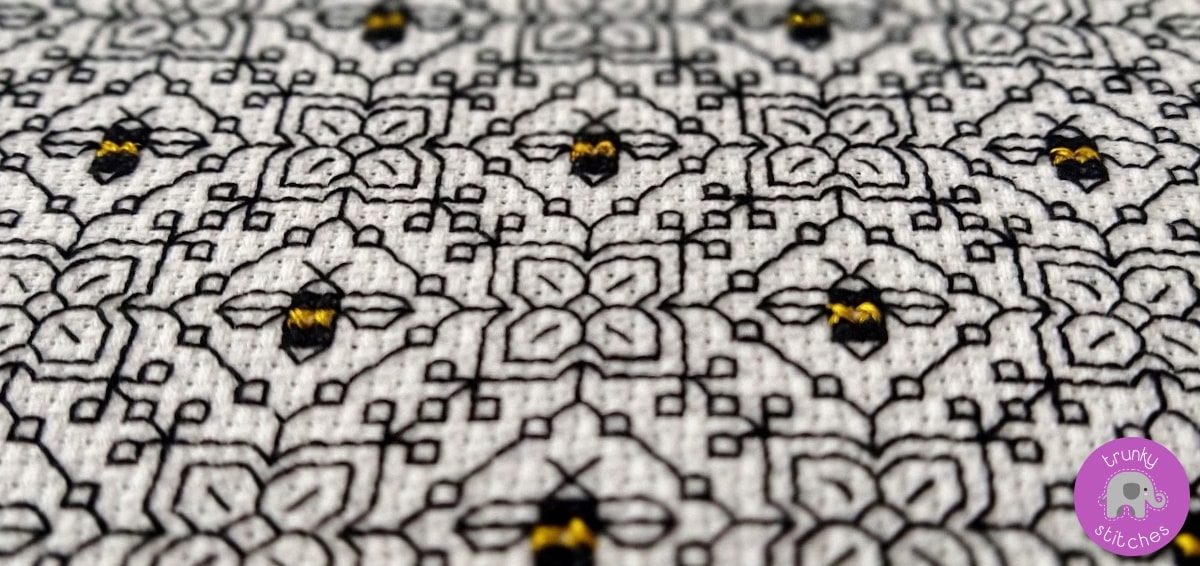What will I need?
Fabric
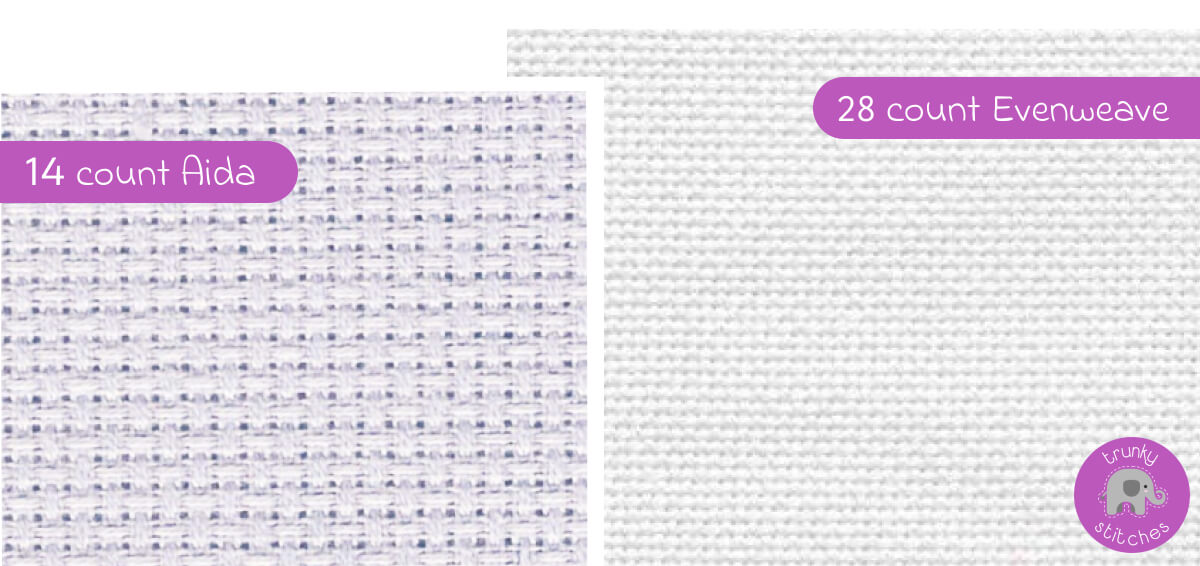
Like cross stitch, blackwork embroidery is stitched on Aida, evenweave or linen. If you are a beginner then I would recommend Aida fabric. I prefer to stitch on this as the holes to stitch in are clear to see. When stitching on Aida each hole in the fabric corresponds with the grid on the pattern chart. Where the lines on the grid intersect this is a hole on your fabric.
Evenweave on the other hand is normally stitched over 2 strands. So instead of stitching into every hole, every other hole corresponds with the pattern grid.
The size of the material required will be specified in the pattern, but it's always best to add a few inches all around to allow for framing and to keep the stitches away from the edges of the material, which can sometimes fray.
Pattern
If this is your first time trying blackwork then it is worth trying out a free pattern first. Once you have stitched your first piece and loved it (of course) you can then look for more patterns. Check out the blackwork patterns I have designed.
Needle

Tapestry needles are used to stitch blackwork, they have a blunt tip and large eye and come in a variety of sizes. You will want the recommended size needle depending on the fabric you are using. Most of my patterns are recommended to be stitched on 14 count Aida or 28 count evenweave, therefore a size 24 needle would be recommended, but feel free to go a size up (smaller needle) if you prefer.
Embroidery threads
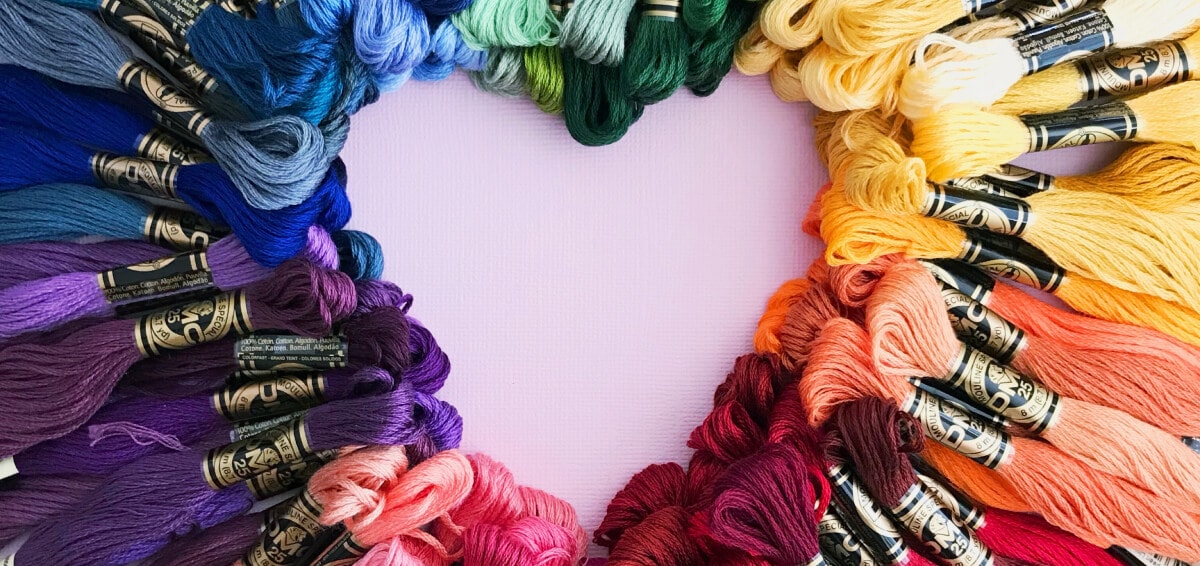
All my blackwork patterns use DMC threads and normally with 1 strand, although it will say in the pattern if it is different. Embroidery thread normally comes in strands of 6. You would cut a piece off to your desired length and then pull out one of the strands and stitch with this.
Scissors
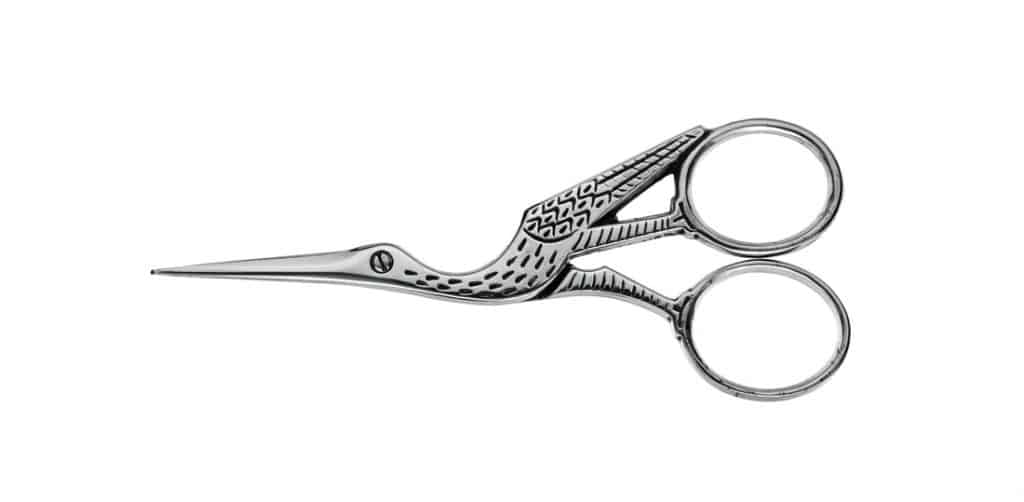
Scissors are a must-have to cut off the strands to use and once you have finished stitching. You can use "normal" scissors, but I would recommend a pair of embroidery scissors. These are smaller, have short, narrow blades and are very sharp. The pointy tip makes it easy to cut single thread, and the sharpness means no chewed thread.
Hoop/frame to stitch on

There are two main types of frames to stitch on - hoops and snap frames. The most common is an embroidery hoop, and these have been around for years. You can get hoops in wood or plastic, they keep the fabric tight, are light and easy to hold. The downside is they leave ring marks on your fabric which will need to be ironed out.
Q-snap frames work by placing your fabric over the inner frame, and using the clamps at the sides to clip the fabric in place. They are light and easier to hold due to their thickness. It's easier to move the fabric by unclipping and repositioning the fabric. They come in a variety of sizes, and I tend to use one that is slightly bigger than my finished piece. This means it leaves no indent marks on the area I'm working on, thus no ironing the finished piece. My preferred frame to stitch on is a Q-snap frame.
Blackwork Pattern / chart
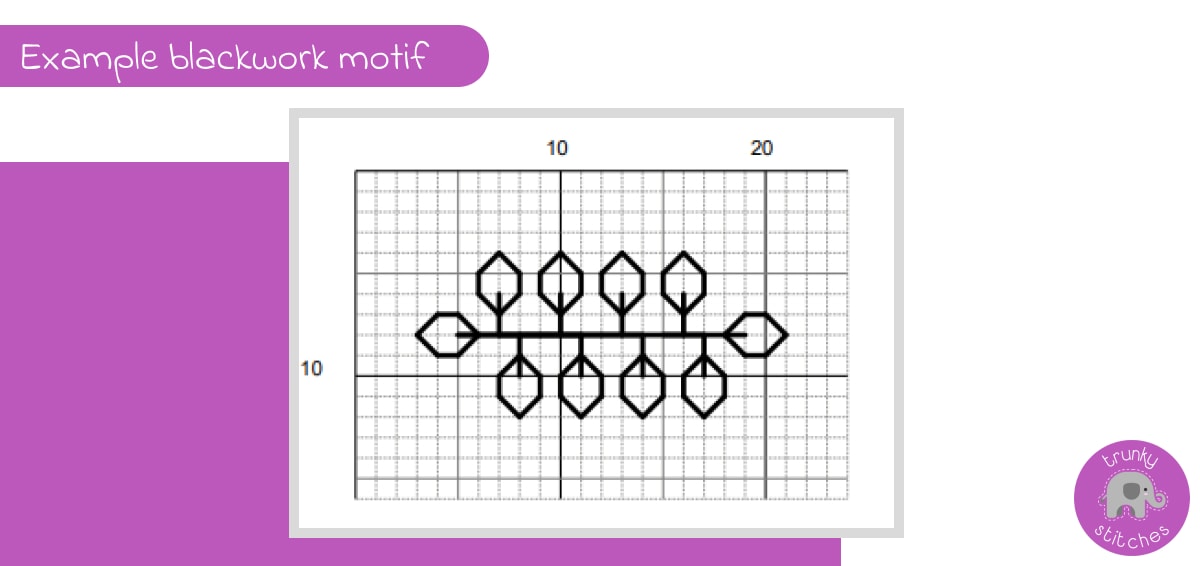
If you are familiar with cross stitch patterns then you will find Blackwork patterns look very similar as they both share a grid that corresponds with the holes in your fabric. Where cross stitch charts shows colored blocks representing 'X' stitches, blackwork charts shows lines representing the backstitches (or holbein stitch). The lines will intersect with the grid lines and it's at these points where your needle will be going up and down into the fabric.
View all my blackwork designs available to download as instant PDFs
Lowery workstand (optional)
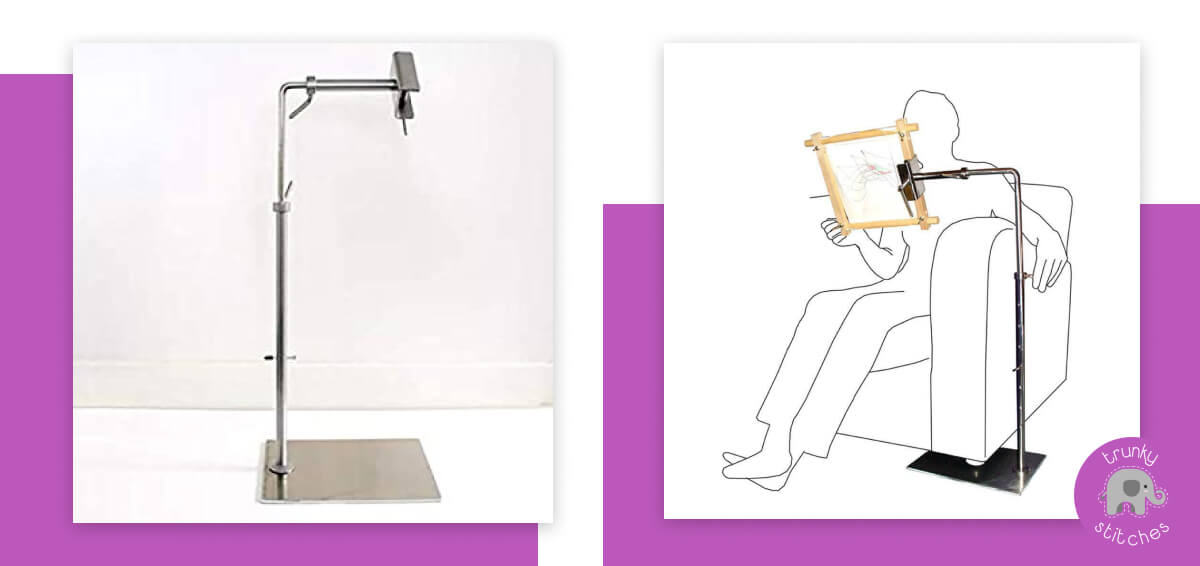
If you are a regular stitcher, then I would definitely recommend a lowery stand. The stand can be placed next to your chair/sofa where you stitch and holds your frame (hoop or snap frame) for you! This is obviously more comfortable to stitch with and frees up your other hand, which you can use to help you stitch much faster. I stitch with both hands - my dominant hand on top and my other hand underneath the fabric. It's amazing how quickly you adapt to two hand stitching!
Lowery workstands are not cheap but I would say they are worth the investment if you are a hard core stitcher! I was lucky to get my Lowery stand second hand for a very good price on eBay.
